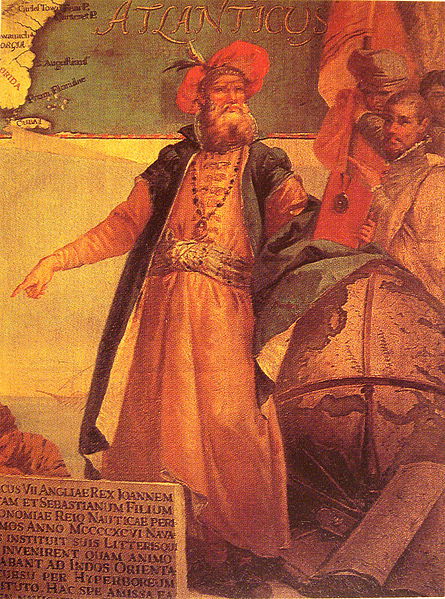John Cabot Sails for North America
John Cabot set sail from Bristol, England, looking for a route to the west on May 20th 1497.

While Christopher Columbus' monumentally bad sense of direction in 1492, which led to his discovery of the Americas, has been celebrated down the centuries as the pinnacle of the Age of Discovery, the equally confused meanderings of his countryman, John Cabot, have perhaps received less attention than they deserve.
Cabot was not the first man to set foot in North America – millions of Native Americans had seen to that. Nor was he the first European on the continent (the Viking settlement at L’Anse aux Meadows in Canada lays to rest once and for all the argument as to who got there first). Worse, he was not even the first Englishman to stride out confidently into God's own country. Yet when Cabot's ship, the Matthew, landed in what today is eastern Canada in June 1497, he began Britain's long and eventful association with the New World that continues to this day.
With a neat – and typical – sense of symmetry Columbus claimed the sultry southern half of the New World for Spain, while Cabot secured the windswept and frozen north for Henry Vll. Thus began a fierce rivalry between imperial Spain and Tudor and Stuart Britain over spheres of influence in the area that in time threw up characters as colourful as Sir Walter Raleigh, Captain Henry Morgan and 'Blackbeard', Edward Teach It was a rivalry, however, that may have claimed Cabot himself as its first victim.
Born Giovanni Caboto in Italy in 1450, after plying his trade as a sailor across the Mediterranean, Cabot moved to England in 1484 to try his luck there. When Christopher Columbus, a fellow Genoese sailor, discovered America in 1492, he sparked off a rush of westward voyages by sailors, explorers and adventurers looking for the elusive western route to the Indies. Already mindful that. the Spanish had a head start on him in opening up the New World, Henry Vll in England took up Cabot's proposal that he set sail to find a westward route to Japan. With the merchants of Bristol, Henry raised the funds to set Cabot on his way, and the Matthew was built, crewed and supplied to set sail in June 1497.
When Cabot landed not in Japan but on the North American mainland he remained unfazed and simply claimed the 'New Founde Lands' for the crown For establishing this foothold in Britain's new overseas empire Cabot was showered with riches to the tune of £10 and encouraged to undertake a second expedition as soon as possible. But unlike later pioneers of Britain's overseas expansion – his £10 reward notwithstanding – Cabot was not to profit from his labours. On his second voyage in 1498 he mysteriously disappeared, never to return.
It was not long before the rumours began that the Spanish had murdered Cabot in order to steal his valuable maps and charts of the north-eastern American coastline. While, and perhaps because, this has never been proved, it is a rumour that persists today. Certainly, many more deaths followed as the Spanish and the British struggled to carve out their own areas of interest on the mainland and in the islands of the Americas, or as the region became an area for Britain and Spain to carry on the European conflicts by proxy, such as during the War of the Spanish Succession where the American battlefields were almost as important as those in Europe.
Ultimately, of course, Britain came to dominate the continent, at least until George III managed to mislay it during a small dispute over tea and taxes 300 years later. By that time Britain's imprint on the Americas, initiated by an Italian serving under a Welsh monarch and ended by a German king of England, had left an indelible mark, shaping many of America's customs and institutions and prefiguring the polyglot society that America is today.




